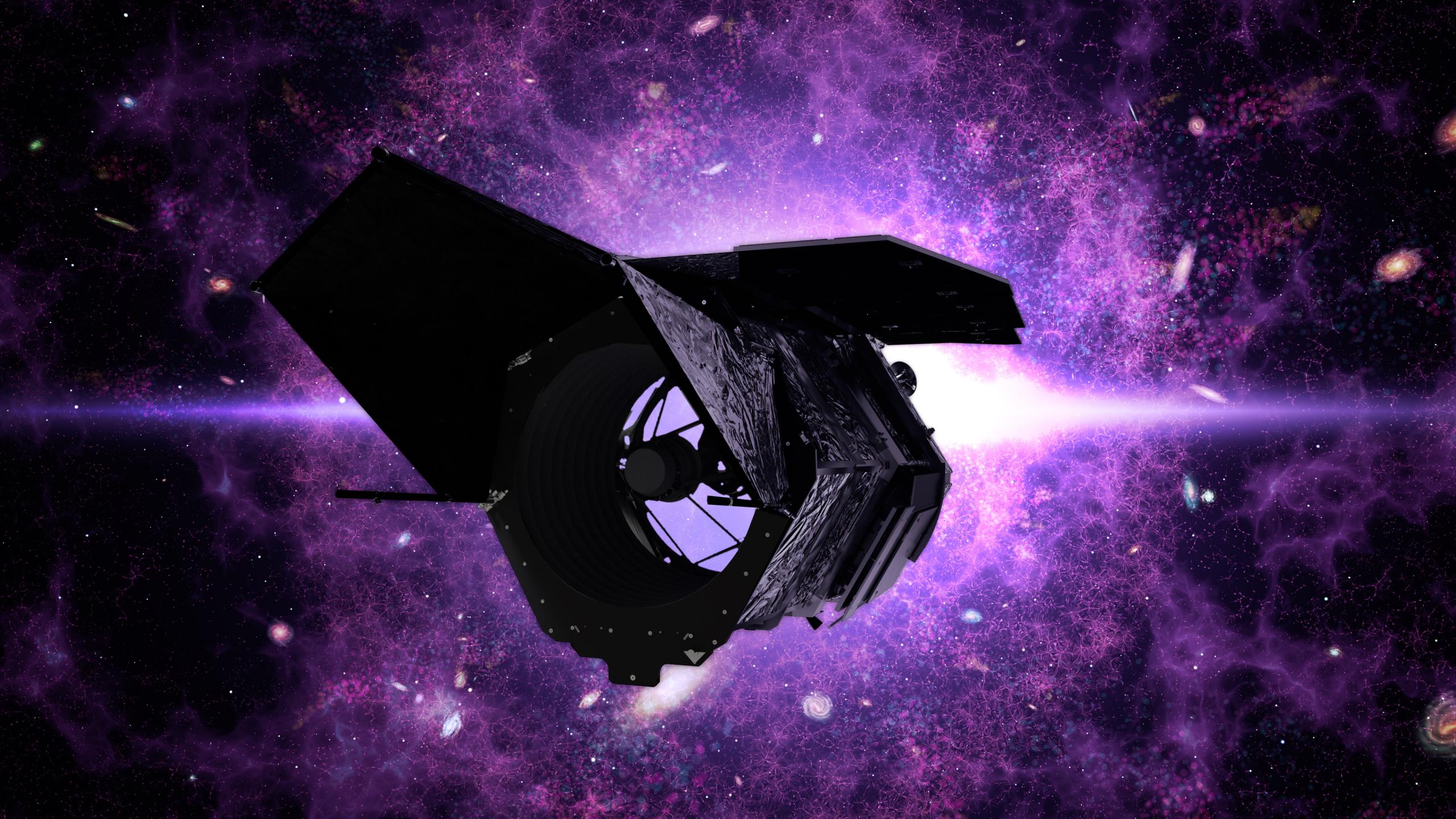
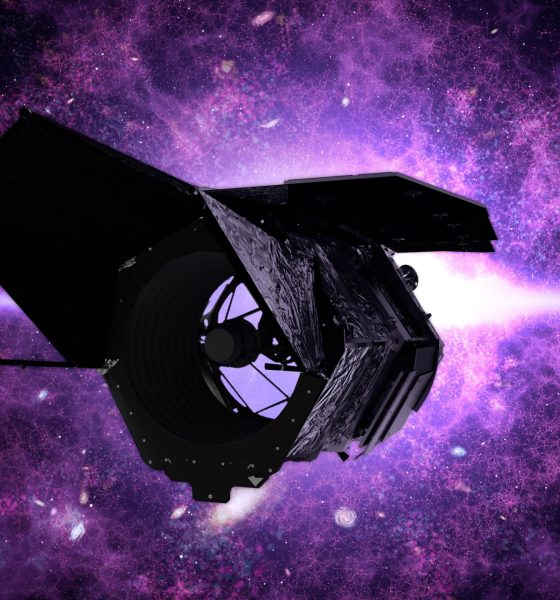
News
SpaceX Falcon Heavy rocket to launch NASA’s Roman Space Telescope
NASA has chosen SpaceX’s Falcon Heavy rocket to launch its next major space telescope, a wide-field observatory that should directly complement the brand new James Webb Space Telescope.
Originally known as the Wide Field InfraRed Survey Telescope (WFIRST), NASA recently renamed the mission in honor of Nancy Grace Roman, a foundational force behind the Hubble Space Telescope. Fittingly, the Roman Space Telescope’s basic design is reminiscent of Hubble in many ways, owing to the fact that the mission exists solely because the US National Reconnaissance Office (NRO) chose to donate an unused multi-billion-dollar spy satellite – a satellite that was effectively a secret Earth-facing version of Hubble.
However, thanks to decades of improvements in electronics, electromechanics, and the instrumentation side of spacecraft and space telescopes, RST will be dramatically more capable than the Hubble telescope it resembles. And now, after a several-year fight for survival, the Roman Space Telescope officially has a ride to space – SpaceX’s Falcon Heavy rocket.
Falcon Heavy continues to be a bit of a paradox, winning contract after contract for increasingly high-value flagship launches despite having not launched once in more than three years. It’s a bit of a self-fulfilling prophecy, at this point, as the major missions that are increasingly being entrusted to Falcon Heavy are far more likely to run into significant spacecraft-side delays. At one point in late 2021, for example, SpaceX had five Falcon Heavy launches tentatively planned in 2022 – all but one of which had already been delayed several months to a year or more. Seven months into 2022, not one of those missions has launched and it’s looking increasingly likely that Falcon Heavy will be lucky to fly at all this year.
Nonetheless, the Roman Space Telescope joins an impressive manifest that includes the multi-billion-dollar GOES-U weather satellite, NASA’s ~$5 billion Europa Clipper, two modules (HALO and PPE) of a Moon-orbiting space station, NASA’s Psyche asteroid explorer, a large Astrobotic Griffin lander carrying NASA’s VIPER Moon rover, two large geostationary communications satellites, and three missions for the US military. RST is the rocket’s 11th launch contract between now and the mid-2020s.
Despite having a similar resolving power, RST’s primary wide-field instrument will have a field of view 100 times greater than Hubble, meaning that the new telescope will be able to gather magnitudes more data in a similar time. Its primary goals include measuring “light from a billion galaxies over the course of the mission lifetime” and performing “a microlensing survey of the inner Milky Way to find ~2,600 exoplanets.” A second coronagraph instrument will “perform high-contrast imaging and spectroscopy of dozens of individual nearby exoplanets.” According to the Jet Propulsion Laboratory, “the Coronagraph provides a crucial stepping stone in the preparation of future missions aiming to [directly] image and characterize Earth-like planets [that are] 10 billion times fainter than their host star.”
According to NASA, “the telescope’s science program also includes dedicated investigations to tackle outstanding questions [about the nature and] effects of dark energy and dark matter, as well as a substantial general investigator program to enable further studies of astrophysical phenomena to advance other science goals.”
Because RST is also focused on infrared wavelengths of light, it could be an excellent companion to the James Webb Space Telescope (JWST). Whereas RST is a wide-field survey observatory that aims to observe and catalog billions of galaxies, stars, and planets, JWST’s far larger mirror is optimized for up-close observation of individual targets or deep gazes into tiny swaths of sky. RST could ultimately work a bit like an MRI or CAT scan to JWST’s biopsy, telling the surgeon where to look but only hinting at what it might find.
According to NASA, the ~$4.3 billion space telescope’s Falcon Heavy launch contract will cost an exceptionally steep $255 million to send the spacecraft to the Sun-Earth L2 Lagrange point about 800,000 kilometers (~500,000 mi) from Earth. NASA’s contract to launch the even more expensive Europa Clipper spacecraft all the way to Jupiter with a fully-expendable Falcon Heavy rocket is expected to cost less than $180 million.
NASA’s press release also claims that RST will be ready to launch as early as October 2026. A different press release from September 2021 did not mention the 2026 target and only noted that RST’s launch is scheduled no later than May 2027.

Elon Musk
SpaceX maintains unbelievable Starship target despite Booster 18 incident
It appears that it will take more than an anomaly to stop SpaceX’s march towards Starship V3’s refinement.
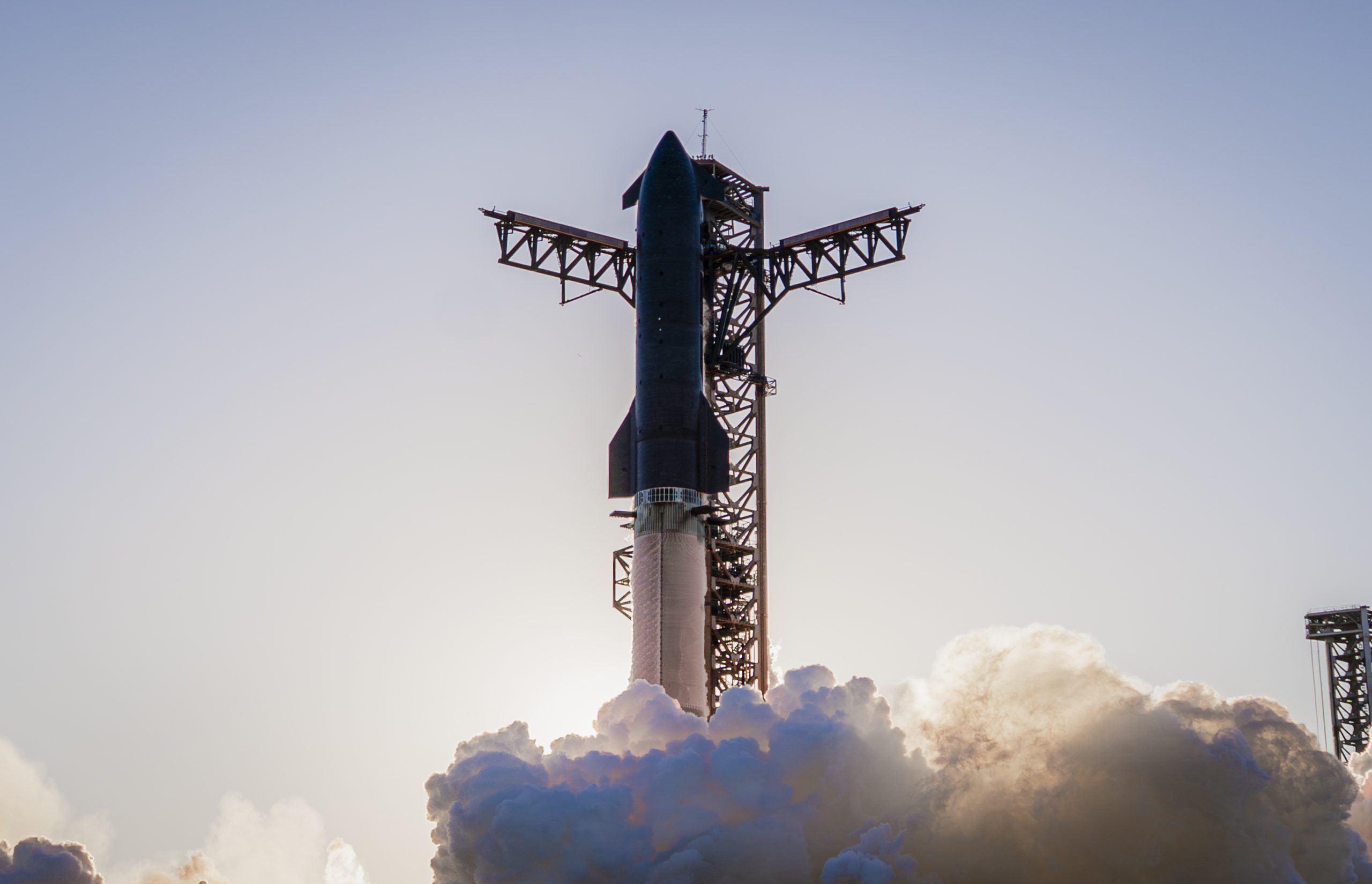
SpaceX recently shared an incredibly ambitious and bold update about Starship V3’s 12th test flight.
Despite the anomaly that damaged Booster 18, SpaceX maintained that it was still following its plans for the upgraded spacecraft and booster for the coming months. Needless to say, it appears that it will take more than an anomaly to stop SpaceX’s march towards Starship V3’s refinement.
Starship V3 is still on a rapid development path
SpaceX’s update was posted through the private space company’s official account on social media platform X. As per the company, “the Starbase team plans to have the next Super Heavy booster stacked in December, which puts it on pace with the test schedule planned for the first Starship V3 vehicle and associated ground systems.”
SpaceX then announced that Starship V3’s maiden flight is still expected to happen early next year. “Starship’s twelfth flight test remains targeted for the first quarter of 2026,” the company wrote in its post on X.
Elon Musk mentioned a similar timeline on X earlier this year. In the lead up to Starshp Flight 11, which proved flawless, Musk stated that “Starship V3 is a massive upgrade from the current V2 and should be through production and testing by end of year, with heavy flight activity next year.” Musk has also mentioned that Starship V3 should be good enough to use for initial Mars missions.
Booster 18 failure not slowing Starship V3’s schedule
SpaceX’s bold update came after Booster 18 experienced a major anomaly during gas system pressure testing at SpaceX’s Massey facility in Starbase, Texas. SpaceX confirmed in a post on X that no propellant was loaded, no engines were installed, and personnel were positioned at a safe distance when the booster’s lower section crumpled, resulting in no injuries.
Still, livestream footage showed significant damage around the liquid oxygen tank area of Booster 18, leading observers to speculate that the booster was a total loss. Booster 18 was among the earliest vehicles in the Starship V3 series, making the failure notable. Despite the setback, Starship V3’s development plans appear unchanged, with SpaceX pushing ahead of its Q1 2026 test flight target.
News
Tesla Sweden faces fresh union blockade at key Gothenburg paint shop
Allround Lack works with painting and damage repair of passenger cars, including Teslas.
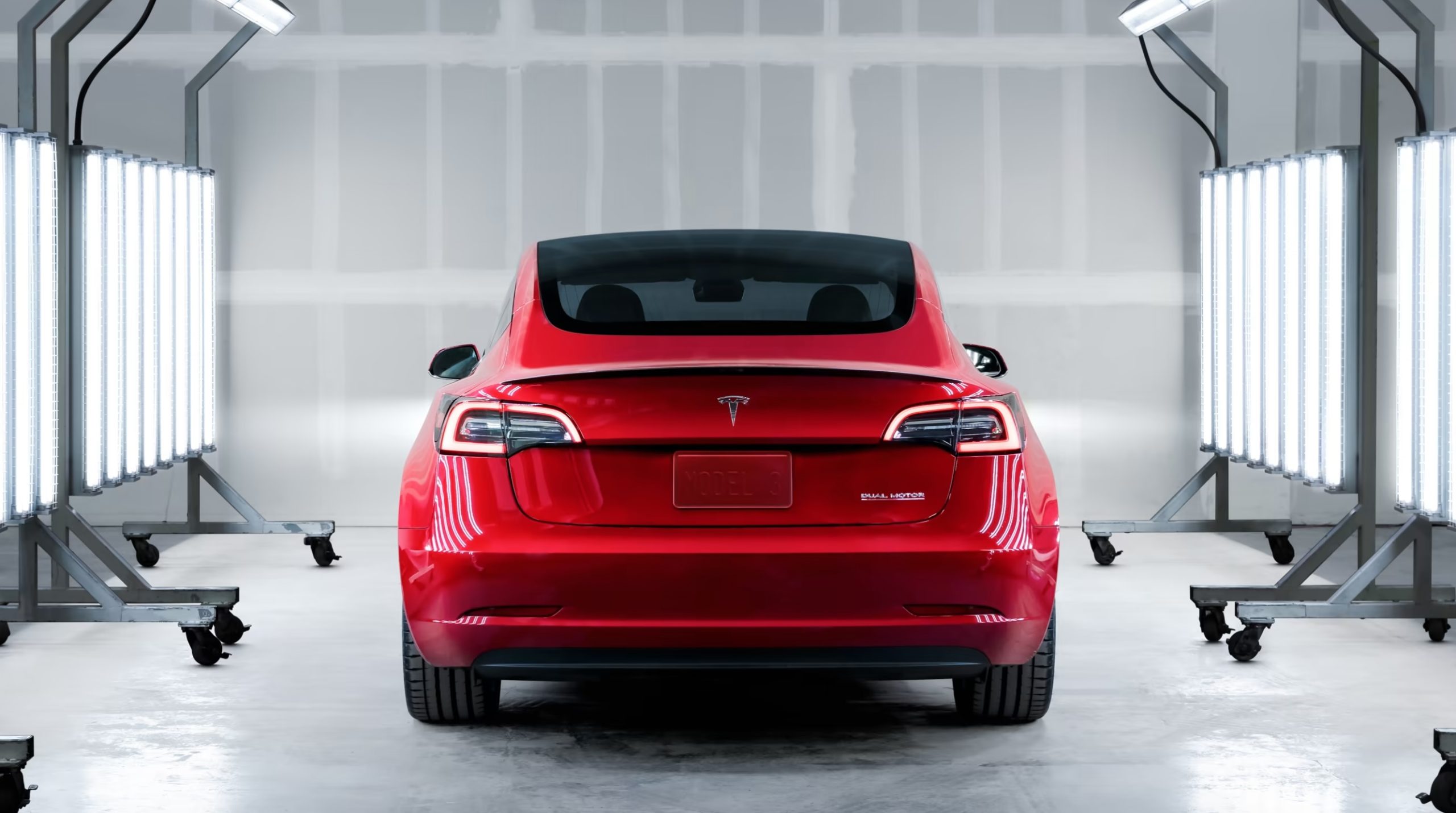
Tesla’s ongoing labor conflict in Sweden escalated again as the trade union IF Metall issued a new blockade halting all Tesla paintwork at Allround Lack in Gothenburg.
Allround Lack works with painting and damage repair of passenger cars, including Teslas. It currently employs about 20 employees.
Yet another blockade against Tesla Sweden
IF Metall’s latest notice ordered a full work stoppage for all Tesla-related activity at Allround Lack. With the blockade in place, paint jobs on Tesla-owned vehicles, factory-warranty repairs, and transport-damage fixes, will be effectively frozen, as noted in a report from Dagens Arbete. While Allround Lack is a small paint shop, its work with Tesla means that the blockade would add challenges to the company’s operations in Sweden, at least to some degree.
Paint shop blockades have been a recurring tool in the longstanding conflict. The first appeared in late 2023, when repair shops were barred from servicing Tesla vehicles. Days later, the Painters’ Union implemented a nationwide halt on Tesla paint work across more than 100 shops. Since then, a steady stream of workshops has been pulled into the conflict.
Earlier blockades faced backlash from consumers
The sweeping effects of the early blockades drew criticism from industry groups and consumers. Employers and industry organization Transportföretagen stated that the strikes harmed numerous workshops across Sweden, with about 10 of its members losing about 50% of their revenue.
Private owners also expressed their objections. Tibor Blomhäll, chairman of Tesla Club Sweden, told DA in a previous statement that the blockades from IF Metall gave the impression that the union was specifically attacking consumers. “If I get parking damage to my car, I pay for the paint myself. The company Tesla is not involved in that deal at all. So many people felt singled out, almost stigmatized. What have I done as a private individual to get a union against me?” Blomhäll stated.
In response to these complaints, IF Metall introduced exemptions, allowing severely damaged vehicles to be repaired. The union later reopened access for private owners at workshops with collective agreements. The blockades at the workshops were also reformulated to only apply to work that is “ordered by Tesla on Tesla’s own cars, as well as work covered by factory warranties and transport damage on Tesla cars.”
News
Tesla breaks Norway’s all-time annual sales record with one month to spare
With November alone delivering 4,260 new registrations, Tesla has cemented its most dominant year ever in one of Europe’s most mature EV markets.
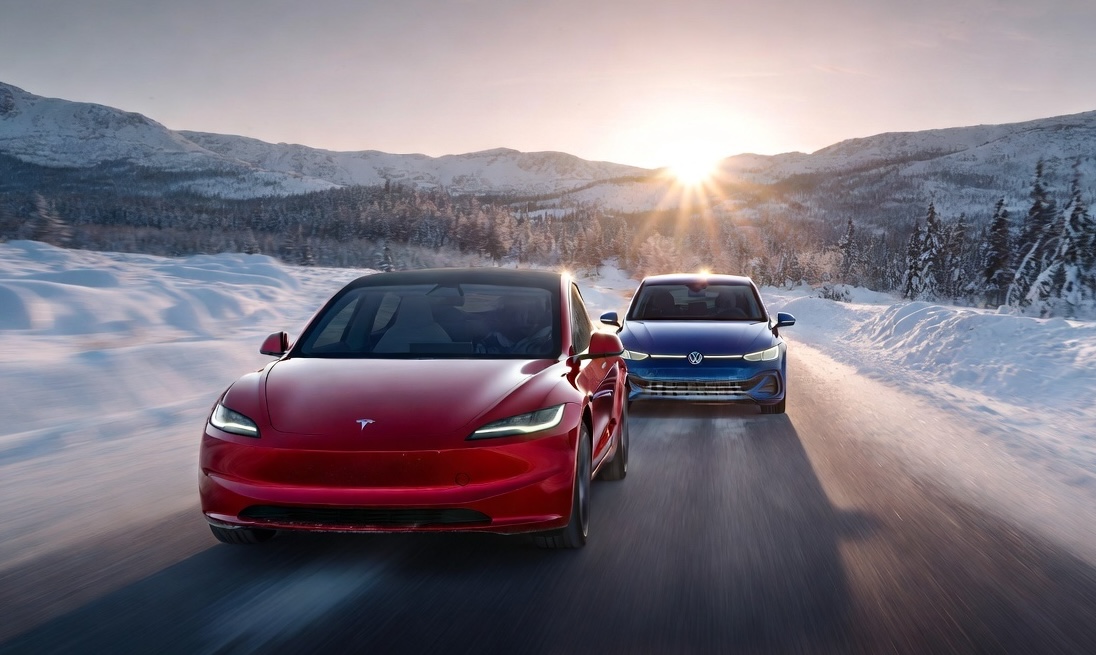
Tesla shattered Norway’s decade-old annual sales record this month, overtaking Volkswagen’s long-standing milestone with over one month still left in the year. Backed by surging demand ahead of Norway’s upcoming VAT changes, Tesla has already registered 26,666 vehicles year-to-date, surpassing Volkswagen’s 2016 record of 26,572 units.
With November alone delivering 4,260 new registrations month-to-date, Tesla has cemented its most dominant year ever in one of Europe’s most mature EV markets.
Model Y drives historic surge in Norway
Tesla’s impressive momentum has been led overwhelmingly by the Model Y, which accounted for 21,517 of Norway’s registrations this year, as noted in a CarUp report, citing data from Elbil Statistik. The Model 3 followed with 5,087 units, while the Model S and Model X contributed 30 and 19 vehicles, respectively. Even the parallel-imported Cybertruck made the charts with 13 registrations.
Demand intensified sharply through autumn as Norwegian buyers rushed to secure deliveries before the country’s VAT changes take effect in January. The new regulation is expected to add roughly NOK 50,000 to the price of a Model Y, prompting a wave of early purchases that helped lift Tesla beyond the previous all-time record well before year-end.
With December still ahead, Tesla is positioned to extend its historic lead further. Needless to say, it appears that Norway will prove to be one of Tesla’s strongest markets in Europe.
FSD could be a notable demand driver in 2026
What’s especially interesting about Tesla’s feat in Norway is that the company’s biggest selling point today, Full Self-Driving (Supervised), is not yet available there. Tesla, however, recently noted in a post on X that the Dutch regulator RDW has reportedly committed to issuing a Netherlands national approval for FSD (Supervised) in February 2026.
The RDW posted a response to Tesla’s post, clarifying the February 2026 target but stating that FSD’s approval is not assured yet. “The RDW has drawn up a schedule with Tesla in which Tesla is expected to be able to demonstrate that FSD Supervised meets the requirements in February 2026. RDW and Tesla know what efforts need to be made to make a decision on this in February. Whether the schedule will be met remains to be seen in the coming period,” the RDW wrote in a post on its official wesbite.
If FSD (Supervised) does get approved next year, Tesla’s vehicles could gain a notable advantage over competitors, as they would be the only vehicles on the market capable of driving themselves on both inner-city streets and highways with practically no driver input.








